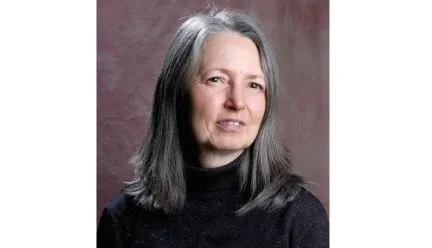Joy Monice Malnar Retires
Upon retirement, she was awarded emeritus status by the university’s Board of Trustees. Malnar’s career exemplifies the value of situating an architecture school within an arts college at a research university. In her scholarship, her experience as a licensed architect was carefully integrated with other disciplines—some far beyond architectural studies—to fashion a specialization that inquires into the sensory experience of the built environment.
This specialization is featured in Sensory Design (University of Minnesota Press, 2004, co-authored with Frank Vodvarka), which remains in print today. The Architectural Review (UK) declared, “Sensory Design is an excellent book. It’s as much ‘Poetics of Space’ and ‘Phenomenology of Perception’ as ‘Sensory Design.’ Bachelard and Merleau-Ponty have been merged with Lewis Carroll, Mark Twain, Freud and Jung to create a literary, poetic and scientific analysis of how and why we experience spaces and places in the way we do. This is a serious body of work, and a rewarding object of study. Sensory Design is an important and thoroughly considered design polemic.” Malnar lectured widely on the book, including an appearance in the 2010 Qatar Lecture Series in Doha. During an eight-day engagement in Qatar, Malnar lectured to faculty on publishing, organized a charrette, and sat for four interviews with the press.
Having been a leader in gaining international recognition for sensory design, Malnar turned her attention toward the application of a “sensori-cultural basis for design” to the path-breaking study of new architecture on land belonging to indigenous peoples in North America. This career trajectory resulted most recently in publication of New Architecture on Indigenous Lands (University of Minnesota Press, 2013, co-authored with Frank Vodvarka). Reviewing the book, Nuno F. Ribeiro of the Indigenous Peoples’ Health Research Centre, University of Regina, Canada, writes, “I appreciate the concern and careful scholarship showcased by the authors, especially when discussing how contemporary Native architectural projects can, and should be, celebrated as evidence of a resurgence of Native cultures. Thus, books such as the present volume are not only relevant but essential if indigenous peoples are to be awarded the respect and recognition they rightfully deserve.” Peter Nabokov, professor in the Department of World Arts and Cultures at UCLA, wrote in a 2016 review that the book is a “marvelously illustrated and comprehensively written survey of contemporary Native American buildings” and that it is an “ambitiously wide-ranging and invitingly designed book, which overflows with stunning color photos, color drawings, and project plans.”
Malnar’s first co-authored book with Vodvarka, The Interior Dimension: A Theoretical Approach to Enclosed Space (Van Nostrand Reinhold, 1992), is also still in print. In his 1992 book review, Arnold Friedmann, professor of design in the Department of Art, Architecture, and Art History at the University of Massachusetts, Amherst, wrote that The Interior Dimension is “a scholarly work that goes beyond a classroom text. It is written clearly and concisely and is quite likely to become a ‘classic.’” In translation, the book has reached a substantial audience in South Korea.
In addition to being a prolific author, Malnar served for several years as editor of the “Design Review” section of The Senses and Society, an academic journal published in the UK that is devoted to the interdisciplinary exploration of how sensation shapes meaning in a wide variety of environmental settings. Following her term as a section editor, Malnar’s service to the journal has included appointments to its editorial and advisory boards.
Over the decades, Malnar taught a wide range of undergraduate and graduate design studio courses, as well as graduate seminars on specialized topics. In recent years, she twice taught in the school’s Chicago Studio, where graduate architecture students are immersed in urban design projects of interest to Chicago city government. This interest goes back to 2005 when Mayor Richard M. Daley invited her design students to present their projects to him, the heads of the Planning Department, and the Chicago Park District. And as recently as fall 2016, Malnar’s students presented their work at a community open house organized by Chicago Alderman Harry Osterman, 48th Ward. Malnar’s teaching accomplishments were complemented by her dedicated service to the school, college, and campus. In the year before her retirement, she served on the executive committees of both the School of Architecture and the College of Fine and Applied Arts.
The School of Architecture was extraordinarily fortunate to have had such a long and productive association with Professor Joy Malnar. The school’s faculty, staff, and students wish her a happy and healthy retirement.
